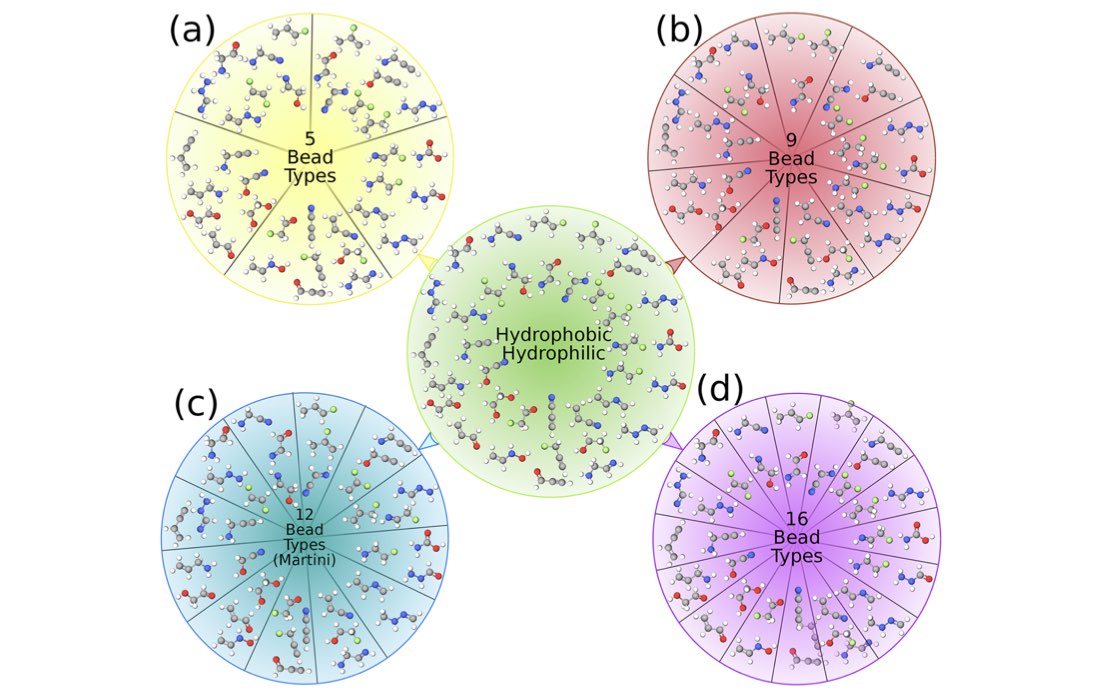Kiran H. Kanekal and Tristan Bereau, Journal of Chemical Physics (2019)
Building alternative CG Martini models
Increasing the efficiency of materials design remains a significant challenge given the large size of chemical compound space (CCS). The use of a chemically transferable coarse-grained model enables different molecular fragments to map to the same bead type, significantly increasing screening efficiency. Here, we propose new criteria for the design of coarse-grained models allowing for the optimization of their chemical transferability and evaluate the Martini model within this framework. We further investigate the scope of this transferability by parameterizing three Martini-like models in which the number of bead types ranges from 5 to 16. These force fields are fully compatible with existing Martini environments because they are parameterized by interpolating the Martini interaction matrix. We then implement a Bayesian approach to determining which chemical groups are likely to be present on fragments corresponding to specific bead types for each model. We demonstrate that a level of accuracy comparable to Martini is obtained with a force field with fewer bead types, using the water/octanol partitioning free energy (ΔGW→Ol) as our metric for comparison. However, the advantage of including more bead types is a reduction of uncertainty when back-mapping these bead types to specific chemistries. Just as reducing the size of the coarse-grained particles leads to a finer mapping of conformational space, increasing the number of bead types yields a finer mapping of CCS. Finally, we note that, due to the large size of fragments mapping to a single Martini bead, a resolution limit arises when using ΔGW→Ol as the only descriptor when coarse-graining CCS.

